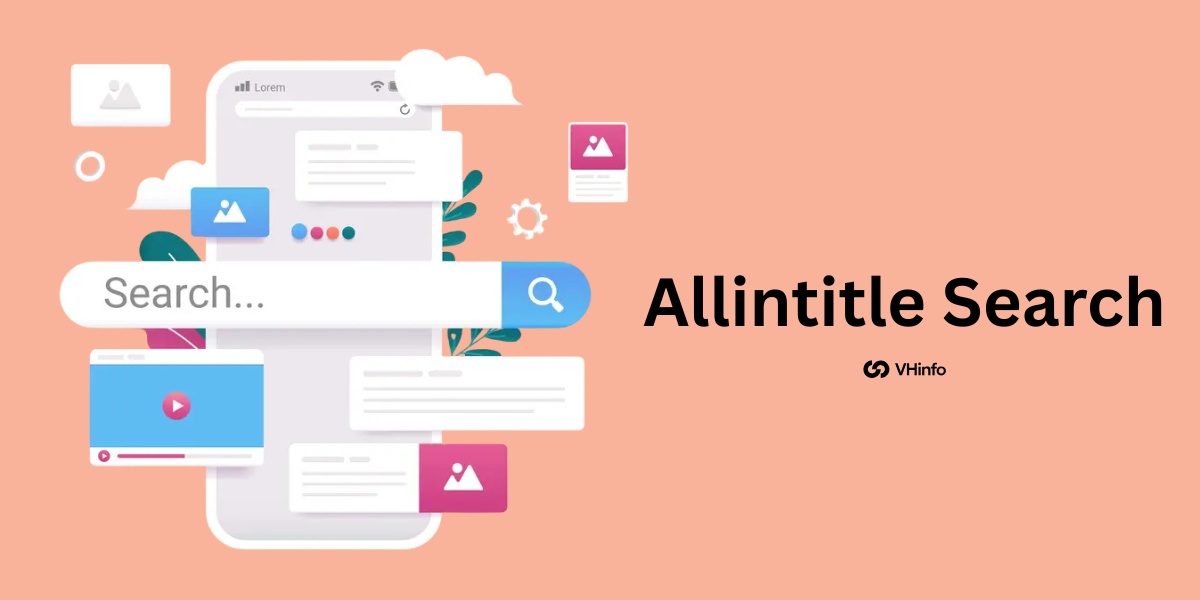When you want to find something on the internet, you use a search engine like Google.
The words you type into the search bar are called search queries. For any business wanting to be found online, search engine optimization (SEO) is a must. A big part of SEO efforts is picking the right keywords. But not all keywords are the same. There are different types of keywords. You may have heard SEO experts talk about long tail keywords. But what about their big, popular brother?
This article is all about fat head keywords. We will explain what they are, the good and bad parts of using them, and how they fit into your digital marketing plan. Knowing how to use fat head keywords is a key part of a good content strategy.
What Are Fat Head Keywords? (And Why They Matter)

Defining Fat Head Keywords (Also Known As Short-Tail Keywords)
Fat head keywords, also called head keywords or head terms, are very short search terms. They are usually only one or two words long. Think of them as the big, main topics in any subject. They are the opposite of long, specific phrases.
Because they are so short, they are very broad.
Core Characteristics: High Volume, High Competition, Broad Intent
Fat head keywords have three main features:
- High Search Volumes: This is their biggest appeal. “High volume” means a lot of people are searching for this search term every month. We are talking thousands, or even millions, of searches. They have the highest search volume of all types of keywords.
- High Competition: Because so many people search for them, everyone wants to be on the first page of the search results for these terms. This means you are competing against big, rich, old companies with very strong websites.
- Broad Intent: This is the most important part. When someone searches for a fat head keyword, we don’t really know what they want. Their search intent (or user intent) is not clear.
For example, if someone types “coffee” into Google:
- Are they looking to buy coffee beans?
- Are they looking for a coffee shop near them?
- Are they looking for general information on the history of coffee?
- Are they looking for a “coffee” table?
We just don’t know. The user intent is very broad.
Examples Of Fat Head Keywords (E.g., “Shoes,” “SEO,” “Coffee”)
Here are some classic examples of fat head keywords to make it clearer:
- “shoes”: This term is searched millions of times. But what kind of shoes? For men? For women? For running? For winter? The search intent is a mystery.
- “SEO”: Someone searching this might want to know “What is search engine optimization?” Or they might be looking to hire a company for SEO services.
- “coffee”: As we said, this could mean anything.
- “SaaS”: A person might be looking for a definition, a list of companies, or news about the industry.
These head terms cover huge, different categories of information.
The Pros and Cons of Targeting Fat Head Keywords

Chasing fat head keywords can feel like chasing a movie star. It’s exciting if you catch them, but it’s very hard.
Let’s look at the good and the bad.
The Advantages: Massive Traffic Potential and Brand Visibility
The main reason anyone targets fat head terms is for the huge amount of organic traffic.
If your website could rank #1 in the search engine results for “shoes,” you would get millions of visitors.
This massive traffic makes your brand look like a big, important leader in your field. It builds brand visibility. When people see your name at the top of the search results for a big term, they start to trust you. You look like the expert.
The Disadvantages: Fierce Competition and Low Conversion Rates
Now for the bad parts. As we said, the competition is fierce. You are not just fighting other small businesses. You are fighting Amazon, Wikipedia, Forbes, and other giant websites that have very high domain authority.
(A website’s domain authority is like its reputation or strength in Google’s eyes. Older, bigger sites have more.)
Even if you do get the traffic, it often doesn’t lead to sales. This is called a “low conversion rate.” Why? It goes back to search intent.
Understanding Search Intent: Why Fat Head Keywords Rarely Convert?
People who use fat head keywords are usually “just looking.” They are at the very top of the sales funnel. They are looking for general information. They are not ready to buy.
Someone searching for “SEO” is probably not ready to pay $5,000 for SEO services. They are likely just starting their keyword research.
Someone searching for “shoes” is probably just browsing, like window shopping.
Potential customers who are ready to buy use much more specific keywords. These specific phrases show they know what they want. For example, a person searching “buy men’s red Nike running shoes size 10” is ready to pull out their credit card.
The fat head searcher is just starting. The long tail searcher is at the finish line. Because fat head searchers are not ready to buy, they don’t “convert” into customers very often.
Fat Head Keywords Vs. Long-Tail Keywords: A Strategic Comparison

You cannot talk about fat head keywords without talking about long tail keywords. A good content marketing strategy needs both.
Defining Long-Tail Keywords (E.g., “men’s brown leather running shoes size 10”)
Long-tail keywords are the opposite of fat head keywords. They are long, specific phrases that people type into a search engine. They are usually three or more words long.
- Fat Head: “shoes”
- Long-Tail: “men’s brown leather running shoes size 10”
- Fat Head: “SEO”
- Long-Tail: “best SEO agency for SaaS startups”
- Fat Head: “coffee”
- Long-Tail: “how to make cold brew coffee at home”
Key Differences: Volume, Competition, and Specificity
Let’s break down the main differences:
| Feature | Fat Head Keywords | Long-Tail Keywords |
| Length | Very short (1-2 words) | Very long (3+ words) |
| Search Volume | High search volumes | Low search volume / Lower search volume |
| Competition | Extremely high | Less competition |
| Search Intent | Broad (not clear) | Specific (very clear) |
| Conversion Rate | Very low | Very high |
The “Chunky Middle”: Finding A Balance
Between the fat head and the long tail, there is another group. SEO experts sometimes call these middle keywords or “chunky middle keywords.”
These are the 2-3 word phrases that are more specific than a fat head term, but not as specific as a long tail term.
- Fat Head: “shoes”
- Chunky Middle: “men’s running shoes”
- Long-Tail: “men’s brown leather running shoes size 10”
These chunky middle keywords are often a great place to focus your SEO efforts. They have good search volume but less competition than the fat head keywords.
Which Keyword Type Is Right For Your Strategy?
Here is the simple answer: You need all three types of keywords.
- You use long tail keywords for your blog posts and articles to attract potential customers who are ready to buy or learn something specific.
- You use chunky middle keywords for your main category pages or service pages.
- You use fat head keywords for your homepage and your biggest, most important pillar web pages.
A smart content strategy uses all different types of keywords to build a strong website.
How to Strategically Use Fat Head Keywords In Your SEO?

So, fat head keywords are not bad. You just have to be smart about how you use them.
When to Target Fat Head Keywords (New Vs. Established Sites)
- If your site is new, do not target fat head keywords. You will not rank. You will waste time and money. Your new site has low domain authority. Focus 100% on long-tail keywords and chunky middle keywords. You can win those.
- If your site is established, if your site is a few years old, has a high domain authority, and lots of good content, you can start to compete for fat head keywords.
At VH-Info, we help SaaS companies build their domain authority with link building. This is the work that makes it possible to one day rank for these huge head terms.
Using Fat Head Keywords For Top-of-Funnel Content
The best way to use fat head keywords is for “top-of-funnel” content.
This is a type of content that gives general information. It’s not trying to sell anything. Let’s say your fat head keyword is “link building.”
You would write a giant, amazing, 5,000-word guide called “The Ultimate Guide to Link Building.” Your goal is not to sell SEO services. Your goal is to be the best keywords resource on the internet for that topic. This builds trust. People who read your guide will remember your brand.
On-Page SEO: Optimizing Your Homepage and Core Service Pages
Your homepage and main service landing pages are the right place to target a fat head keyword.
For example, our homepage at VH-Info might target “SaaS link building.” A general search engine marketing agency might target “SEO.”
This means your fat head term should be in your page title, your main heading, and your meta description (the little summary that shows up in search results). But be careful! Do not use the term over and over. This is called keyword stuffing.
Keyword stuffing is when you write “We are the best SEO services for SEO services in New York” on a page. It sounds fake and search engines will punish you for it. It’s a bad user experience.
Building Content Hubs Around A Central Fat Head Term
This is the most powerful strategy. It’s called “topic clusters.”
- Pick your Fat Head Keyword. Let’s use “Content Marketing.” This is your “Hub.” You will create a main, central page about it.
- Do Keyword Research. Find all the long-tail keywords related to it.
- “How to write good blog posts“
- “content marketing strategy for beginners“
- “How to promote your content“
- Write Articles. Write a separate blog post for each of those long tail terms. These are your “Spokes.”
- Link Them. In each long-tail article, add internal links pointing back to your main “Content Marketing” hub page.
This strategy builds topic clusters. It shows the search engine that you are an expert on the entire topic of “Content Marketing,” not just one particular keyword. Your supporting articles should target long tail versions of that term, not just an exact match of the fat head keyword.
This “hub” strategy is something we use often. Building topic clusters shows Google you are an expert. VH-Info specializes in building the links to those hub pages to give them real power and raise your search engine rankings.
Analyzing and Measuring Your Fat Head Keyword Performance

How do you know if your SEO efforts are working? You have to track your performance.
Key Metrics to Track (Rank, Traffic, Bounce Rate)
For fat head keywords, you need to look at these metrics:
- Rank: Where do you show up in the search engine results? Are you on page 1? Or page 10?
- Traffic: How many people are visiting your page from that keyword search?
- Bounce Rate: This is when a person visits your page and leaves right away without clicking anything. For fat head terms, your bounce rate might be high. People are just looking for general information. This isn’t always bad.
Tools For Researching and Monitoring Your Keywords
You cannot guess. You must use a keyword research tool.
These tools help you do thorough keyword research. They show you search volumes, how much competition there is, and new keyword ideas.
- Google Keyword Planner: This is a free tool from Google. It’s a good place to start to find keyword ideas.
- Google Trends: This free tool shows you if a search term is becoming more or less popular over time.
- Premium Tools (like Ahrefs, Semrush): These tools (which we use at VH-Info) give you much more detail. They help you find related searches, see what your competitors are doing, and track your search engine rankings every day.
A good keyword research tool is vital. After your research, VH-Info can help with the next step: building the high-quality backlinks you need to rank for those target keywords.
When to Pivot: Recognizing When the Competition is Too High?
You must be realistic. Sometimes, a fat head keyword is just too hard.
If you have been trying to rank for “insurance” for two years and your domain authority is still much lower than the top 10 results, it is time to pivot. You are not giving up; you are being smart. Focus your SEO efforts on the chunky middle keywords and long tail wins.
These will bring you real value and potential customers who are ready to convert.
FAQ’s:
What is an Example Of A Fat Head Keyword?
Examples are short, one- or two-word terms with high search volumes, like “shoes,” “insurance,” “software,” or “SEO.”
Are Fat Head Keywords Good For SEO?
Yes and no. They are good for getting massive organic traffic and building your brand. They are bad for getting sales quickly because they have broad search intent. They are one part of a complete search engine optimization strategy, not the only part.
Are Fat Head Keywords Harder to Rank For Than Long-Tail Keywords?
Yes. They are much, much harder to rank for. They have the most competition from the biggest and oldest websites on the internet. Long-tail keywords have less competition.
Should I Use Fat Head Keywords In My Blog Posts?
Yes, but carefully. You can use fat head keywords as the main topic for a very big, helpful guide (a “top-of-funnel” article or content hub). But for most of your regular blog posts, you should target long-tail keywords and chunky middle keywords. Never use keyword stuffing.
How Can I Identify Fat Head Keywords For My Niche?
Use a keyword research tool like Google’s Keyword Planner. Look for terms with just one or two words that have very high search volumes (thousands or millions of searches per month). Those are your fathead keywords.
Conclusion
Fat head keywords are the “superstars” of the world of SEO. They are the short, popular terms that get all the attention and all the organic traffic. But they are not the only types of keywords.
A smart content strategy uses a mix of all three:
- Fat head keywords for your main pages and content hubs to build a brand.
- Chunky middle keywords for your category pages to get interested buyers.
- Long-tail keywords for your blog posts to answer specific questions and get high-quality leads.
Doing thorough keyword research is the first step. Getting the right keywords for your content marketing is key.
But to rank for any keyword, especially the competitive fat head terms, your website needs authority. You get that authority by earning high-quality backlinks. At VH-Info, we specialize in helping SaaS brands build that authority through strategic link building.
Once you know your target keywords, we can help you build the power to rank for them.
Would you like to learn more about how link building can help you rank for your most important keywords?



